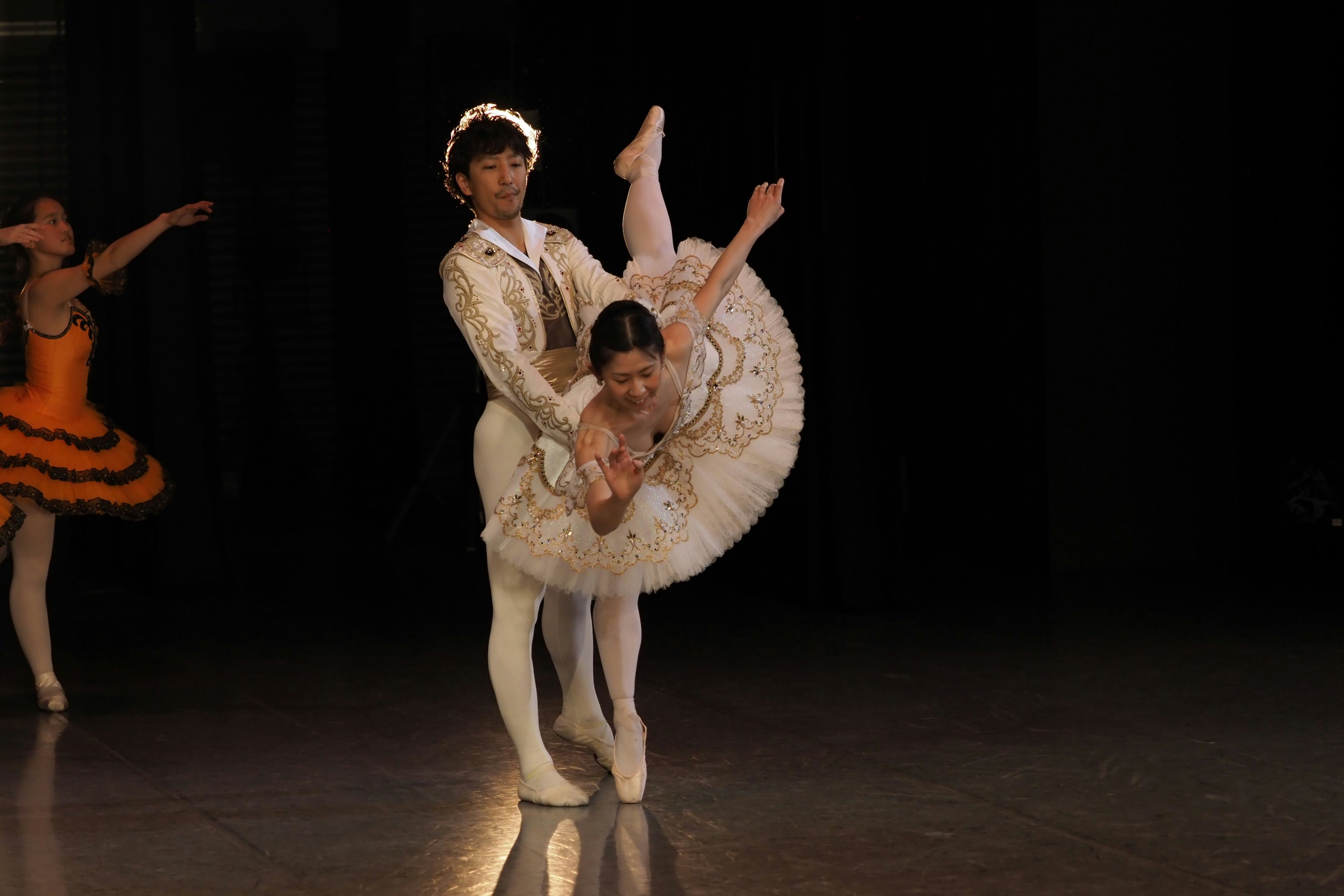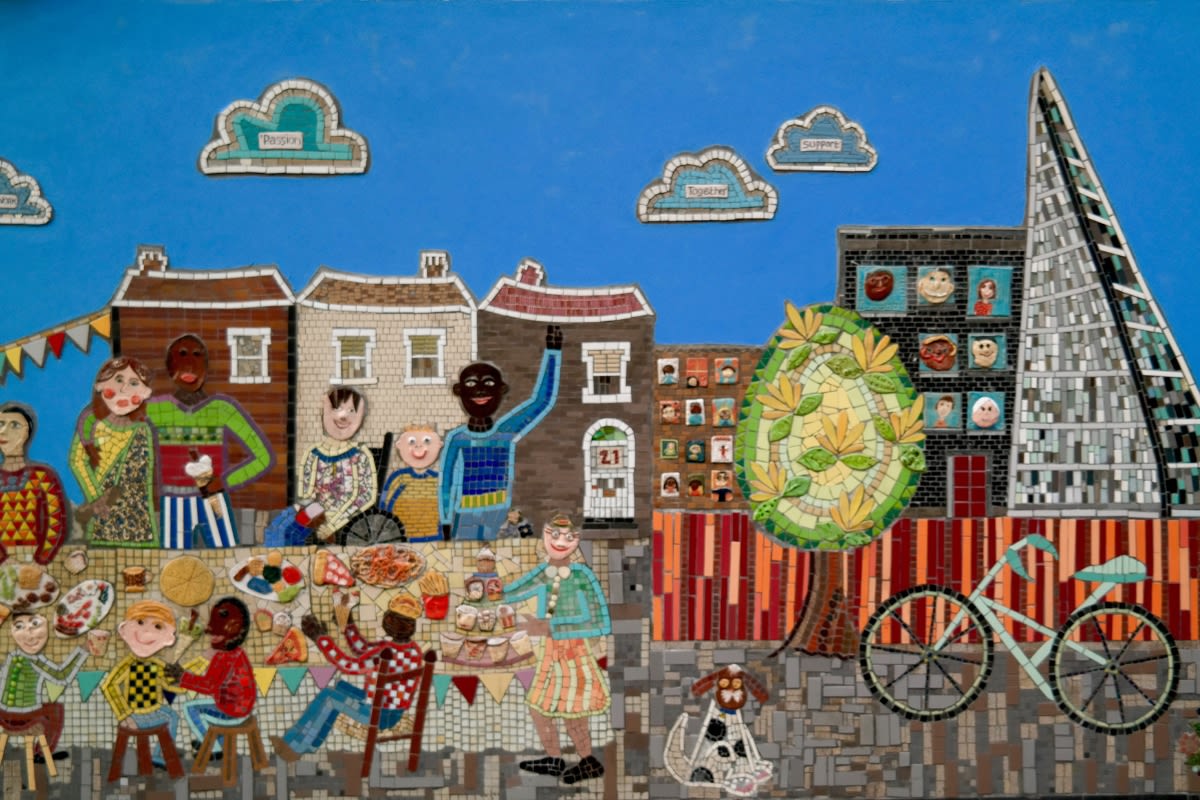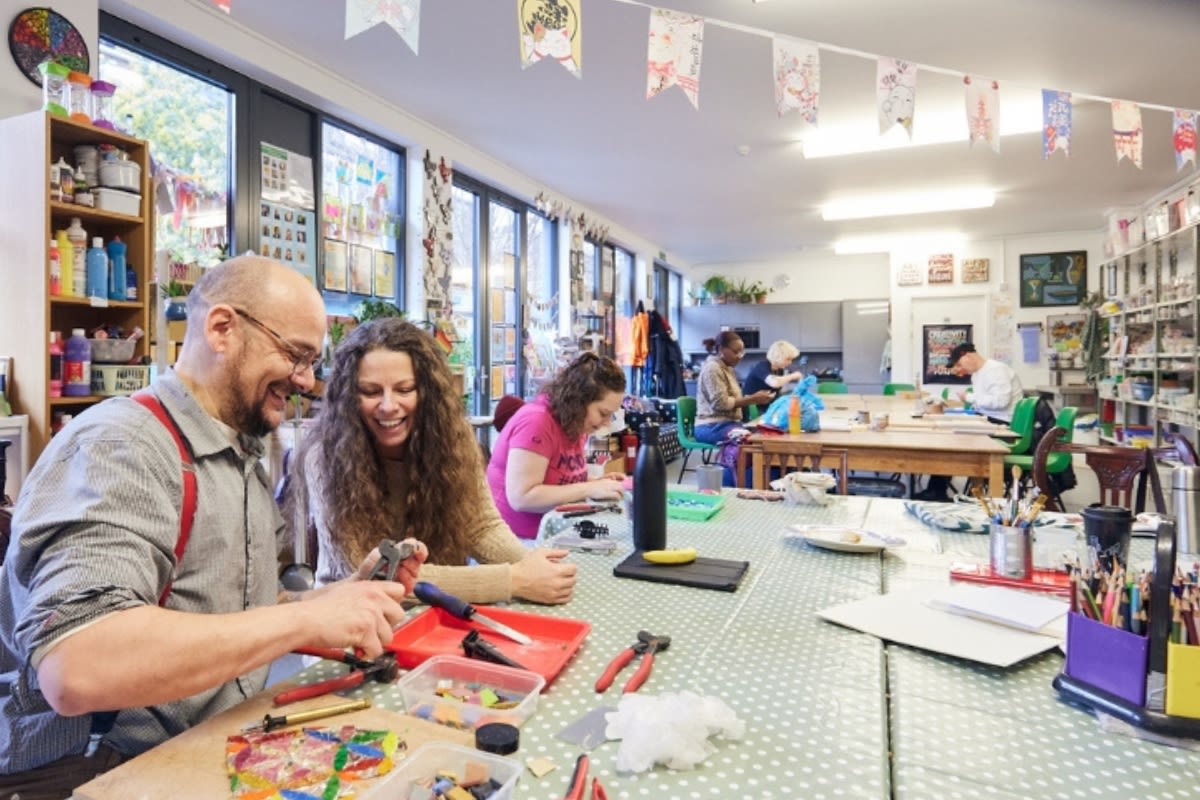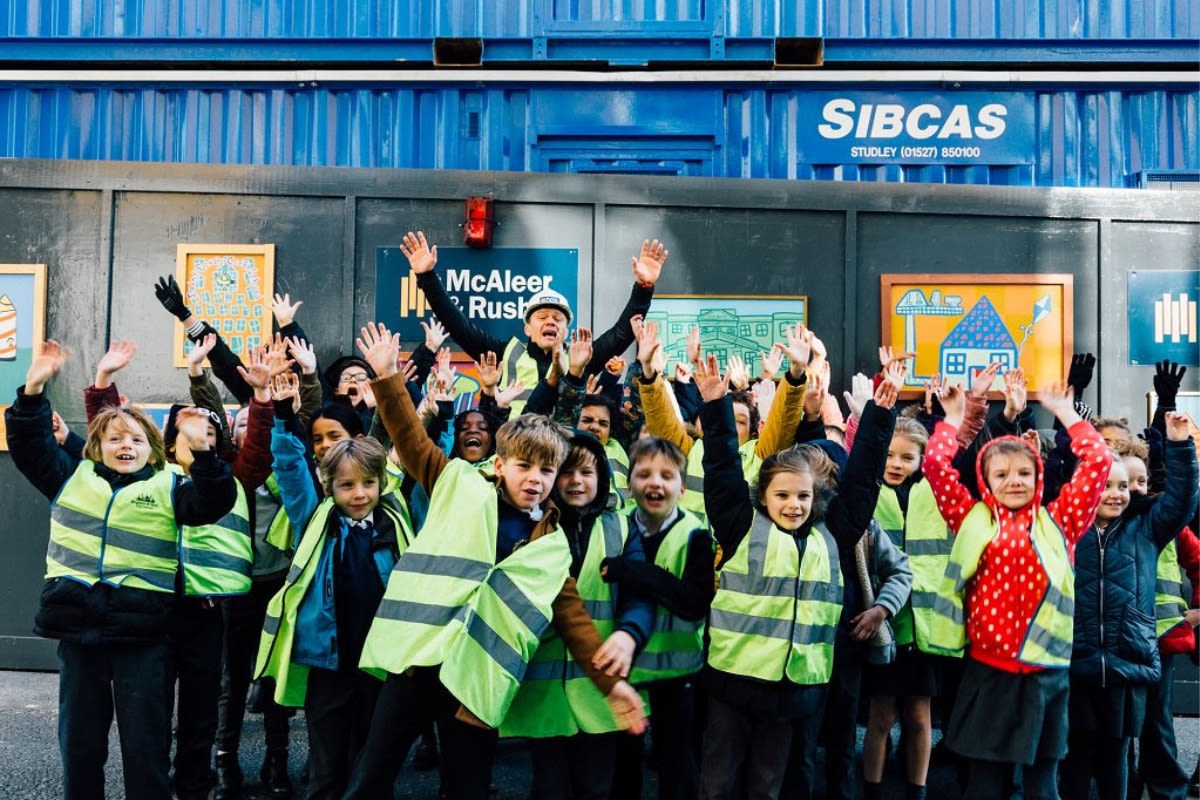Arts Council funding cuts hit dance and visual art hardest in Lambeth
Data retrieved from the public body shows the two artistic disciplines have consistently received below-average funding since 2016

London’s arts and cultural organisations are jewels in the nation’s crown, which enable it to maintain its reputation as a world-class culture capital.
Not only do they act as a point of refuge and entertainment for the city’s 8.9m population, they drive tourism, provide jobs and contribute substantially to the economy.
Established in 1997, the Department for Culture, Media and Sport (DCMS) oversees government policy and funding for the arts, creative industries and cultural organisations.
One of the ways the DCMS supports this sector is through the money it allocates to Arts Council England (ACE), a development agency that works closely with the government and organisations to cultivate flourishing cultural landscapes.
The two main ACE financial offerings organisations can apply for include annual funding for National Portfolio Organisations (NPOs) and National Lottery Project Grants (NLPGs).
From 2018 to 2019, ACE’s NPOs, consisting of over 800 organisations, generated an income of £2.1bn, making them the most profitable DCMS-funded cultural organisations.
Despite their fruitful nature, for over a decade, concerns have been growing for the welfare of these organisations amidst austerity measures.
Between 2010 and 2015, London's investment figure plummeted by 19% and the financial strain has only intensified following the newly implemented ‘Levelling Up’ initiative, which endeavours to redistribute wealth outside the capital.
The 2023-26 Investment Programme announcement in November 2022, which laid out the proposed figures, sparked unease and outrage amongst London-based institutions that took the brunt of the cuts.
Between 2016 and 2024, Lambeth received £339mn for its 29 NPOs, making it the best-funded local authority in London with a 27% share of the total amount.
Nonetheless, Lambeth has felt the squeeze following a 3% fall in NPO funding since 2016 and a 59% decline in NLPGs in the last year alone.
Reflecting on the cuts, a Lambeth council spokesperson commented: “We are very concerned about the declining funding for arts organisations and the pressure this is putting on them and local authorities to plug the growing gap.
"Funding policies, Brexit and the Covid-19 pandemic hit the sector hard. That’s why it’s more important than ever that the council work strategically with the Arts Council, the Greater London Authority and other funders and supporters to enable the sector to thrive.”
Disparity in funding between organisations and main disciplines

As ACE attempts to diversify its organisation portfolio by shifting its focus outside of the capital, competition to reserve a seat at the funding table is fiercer than ever.
A pressing issue for all London boroughs is the disparity in funding between organisations and main disciplines, which Lambeth is a striking example of.
Home to the vibrant cultural hub South Bank, the local authority is peppered with ACE-funded powerhouses such as the Young Vic, London Philharmonic Orchestra, Rambert, Southbank Centre and National Theatre.
Between 2016 and 2024, the Southbank Centre bore 42% of the total issued for Lambeth's NPOs and the National Theatre 39%. The two were also amongst the five top-funded NPOs in London.
Looking closer at main discipline trends over the last eight years, Lambeth's NPOs were ordered into seven main categories, for which there was an average count of four organisations per discipline and an average award amount of £48mn for each.
Theatre dominated most of the funding - its eight NPOs received £155mn, equating to 46% of the borough's total sum. In comparison, the six music NPOs acquired £18mn (5%), the three dance NPOs £18.6mn (6%) and the three visual arts NPOs £3.7mn (1%).
Accordingly, all three disciplines fell below average regarding award amounts, and dance and visual arts also ranked below average for the organisational count. In the same time frame, Lambeth's dance and visual arts NPOs received below the average amount awarded per discipline for eight years on the trot.
In more recent data (2022/23 and 2023/24), Lambeth’s theatre NPOs saw an increase in funding by 35%, as did music and visual arts, yet the figure for dance fell by 4%.
Similar trends arose in the NLPGs data. Between 2018 and 2025, theatre took the top spot, securing 24% of the total amount, contrasted with 11% allocated to music and visual arts, almost double the 6% for dance.
This pattern of dance funding lagging appeared in other ACE datasets on a local, regional and national level. For example, England's dance NPOs were allocated 4.2% of total funding from 2016 to 2024 compared to 25% for visual arts and 60% for music.
During the pandemic, the DCMS established the Culture Recovery Fund (CRF) to support organisations through their darkest days and elected key delivering bodies to delegate the £1.57bn.
One of those bodies was ACE, who divided their amount into a series of grants ranging in size. The three main ones were CRF 1, CRF 2 and CRF 3 Continuity Support, which London received a combined amount of £259mn for.
Concerning main disciplines, music took the lead with a £75mn payout, closely followed by theatre with £66mn. Visual arts acquired £22mn and dance tailed behind with £15mn.
Figures for Lambeth were similar - music organisations received the largest share of funding with £8mn, followed by theatre with £7mn, compared to a respective £2mn for visual arts and dance.
Whilst there are no expectations for funding to be evenly distributed owing to factors such as organisational size, running costs and the number of in-house programmes offered, if these gaps are not properly addressed, there is an imminent risk of particular disciplines and smaller organisations falling to the wayside.
When we measure the value of arts and cultural organisations by their economic output alone, we lose the essence of artistic creation and drive organisations into producing new work based on profit rather than from a love of creating.
The importance of investing more in Lambeth’s dance organisations

Not only does dance boast clear health benefits, as a practice deeply entwined with cultural heritage, it also offers a space where people of all ages and backgrounds can unite to engage in vital dialogue about such themes.
At a time when the radical right is on the rise in Europe, dance organisations in ethnically diverse boroughs such as Lambeth, can facilitate opportunities to amend fragmented relations and carve out sustainable futures where we celebrate our differences rather than fude over them.
Nestled in the heart of South Bank sits one of Britain's most distinguished dance companies, Rambert.
Founded by Polish emigree and former Ballet Russes dancer Marie Rambert, its first official performance was hailed as the “birth of British ballet” and in 2026, it will celebrate its 100th birthday.
From 2016 to 2024, Rambert received £18mn in funding from ACE, making it the fifth-best-funded organisation in Lambeth and the top for dance.
Not only does the dance company put on hearty productions traversing all genres from K-Pop to Dancehall, it also invests a significant amount of its ACE funding into sustainable community-oriented projects.
Since 2014, Rambert has worked closely with social enterprise Coin Street Community Builders to offer bespoke dance classes for children and adults over 60 from all walks of life.
Together, they have implemented discounted access to in-house dance classes and tickets to Rambert performances.
Tailored specifically to Lambeth's youth, Future Movement is a free programme for 16 to 21-year-old residents with limited access to cultural activities that aims to provide an environment where they are supported to push themselves to build new skills, develop critical thinking and confidence, socialise and explore a range of creative industry jobs.
Next year, Rambert will host its annual street party featuring local artists and Future Movement participants in collaboration with Coin Street Community Builders.
Supported by Lambeth Council’s Future Workspace Fund, they have also recently set up a value-for-money workspace dedicated to people in creative industries known as Rambert Works.
Regardless of the dance company's stellar work, like other London-based institutions, its funding has been affected by the Levelling Up cuts.
Despite this, the Deputy Director of Development, Mia Gulati, takes pride in Rambert’s ability to adapt and is grateful to ACE for their ongoing support and guidance during challenging times.
She said: “Like most arts organisations, rather than reducing activity, we have become more entrepreneurial in our approach to raising additional income such as grant income from fundraising, and earned income through box office via our productions such as Peaky Blinders: The Redemption of Thomas Shelby, venue hire – we have rehearsal spaces in our building that we rent to arts organisations and West End theatre alike.”
To counter the inevitable fluctuations of such cuts, ACE launched Transform, a competitive funding programme available to NPOs who received conditional offers of reduced funding in the 2023-26 Investment Programme.
Dance, music and visual arts were the only disciplines in London to secure Transform aid and the average amount awarded per discipline was £1.4mn.
Regarding the percentage share per discipline, 49% went to visual arts, 46% to music and 6% to dance. Rambert was the only dance NPO to be offered additional support.
Revealing how the £252k top-up has been utilised, Gulati shared: “Transform has been pivotal in allowing us to develop our digital home Rambert Plus, our online platform which contains on-demand classes and Behind the Scenes content such as interviews, podcasts and playlists, and vitally allows us to have a direct relationship with our fans for the first time.
"It has also allowed us to employ specialist services to promote and market our offer. Because Transform is restricted funding it meant we have had to ring-fence this area of the budget, which is innovative and experimental but also has the potential to increase income through a subscription model.”
She also nodded to the £2.1mn they received as part of the Culture Recovery Fund as a crucial lifeline, which allowed them to continue to produce new work and tour it within a Covid-safe environment, and bring dance and wellness content directly to people’s homes via Rambert Plus.
The grant was also put towards paying staff, which is why Gulati believes without it, many of company's dancers would have been forced to abandon their creative careers.
Rambert is a poster child for the boundless possibilities dance organisations can offer their local communities and why public bodies should be investing more in developing new spaces and succouring the ones that already exist.

The importance of investing more in Lambeth's visual arts organisations

Long-term Lambeth resident Julie Norburn trusts in the healing power of art, which is why she founded the non-profit community organisation Art4Space in 1999.
Over the last 25 years, Norburn’s vision has remained the same: to provide a friendly and inclusive space where the local community can find togetherness and improve their mental well-being through creativity.
Best known for textiles, ceramics and mosaics, Art4Space runs visual art workshops and classes for schools, mental health services, domestic violence survivors and the general public.
Norburn clarified: “I chose these practices because they are very hands-on and therapeutic. They reach out to all levels and abilities. But I also love them because I'm trying to preserve the old heritage crafts. A lot of our work is intergenerational.”
She continued: “Whether cultural or generational, we’re all about keeping these arts and crafts alive before they become extinct. So there’s a real intention behind why we use those mediums. The way we teach is very much ‘together’ rather than preaching, we want to provide a sense of community, care and belonging.”
Unfortunately, dance is not the only discipline that deserves more investment attention in Lambeth, the funding for visual arts NPOs in the borough has been markedly low.
From 2016 to 2024, the three visual arts NPOs received £3.7mn compared to £17.9mn for music and £18.6mn for dance, accounting for only 1% of the total.
Although the funding amount has improved by 55% during the eight years, if we take the initial figure into account (£352k), there is evidently still a long way to go.
Between 2023 and 2024, visual arts ranked lowest in Lambeth for National Lottery Project Grants. The average amount per discipline was £324k, whereas visual arts received £174k, a reduction of £63.6k compared to the previous year.
Norburn finds the disparity in ACE funding for Lambeth deeply disheartening and feels it does not aptly reflect the potential of visual arts as a platform for essential community building.
She said: “I see the magic of what engaging in the arts does for people every single day. There are unexpected outputs for some people who might come for what they think is a nice class, which indeed it is. But then it drops deeper and those conversations that matter are happening around the table.
“For those who want to work in silence, there’s an absolute healing quality in that too. Because we are working with people for their mental health, it’s their journey to claim. Whatever your art journey is, whether you're coming to find some solace or you’re an ambitious MA student who wants to come and do work experience with us, we have pathways for everybody, our doors are very open.”
Mosaic at Upton Cross Primary School. Photography by Art4Space.
Mosaic at Upton Cross Primary School. Photography by Art4Space.
The Urban Health 2021 Census reported that 34% of Lambeth households live in socially rented accommodation, making it the largest rental group in the borough, and 11% of those households were also listed as overcrowded.
In Stockwell, where Art4Space is based, the figure is even higher with 41-42% of households living in socially rented accomodation.
Since most social housing lacks private outdoor space, Norburn recently invested in creating a pocket garden adorned with student-made mosaics for residents seeking solitude to come and go as they like.
“We call it the therapeutic lodge. So many people come to our workshops and classes and say: ‘I need time out from the main space, I need to sit outside.’ I like to think we do all we can for people to feel better, to improve their lives,” Noburn said.
During the pandemic, Art4Space accessed ACE financial aid through the Culture Recovery Fund, which Norburn deemed a saving grace.
Thereafter, the organisation has struggled to acquire more ACE funding and has resorted to introducing more fee-paying public classes to supplement their community-centred work.
Whilst Norburn commends the plans to distribute wealth around the country, she fears the ramifications of the Levelling Up cuts on visual arts organisations, especially when they are already so underfunded.
If larger organisations with the internal resources and dedicated teams to apply for more grants are toiling from the ever-growing paperwork pile, smaller organisations are clearly at an unfair disadvantage.
They cannot dedicate more time and energy to apply for an endless stream of additional grants, therefore, the government needs to consider alternative ways to support these organisations if they wish to continue initiatives that deprioritise London's cultural organisations.
Pain: Equality of Care and Support within the community 2024 at the Stockwell studio. Photography by Art4Space.
Pain: Equality of Care and Support within the community 2024 at the Stockwell studio. Photography by Art4Space.
Fortunately, Lambeth Council has been working hard to bridge the gap through its Future Connected programme, which Norburn participated in this year.
The 12-month-long intensive programme invites 12 leaders of grassroots or smaller cultural organisations to partake in workshops led by experts to cultivate new business models, for which they receive a £1k prize.
At the end of the programme, a judging panel presents a £10k Future Connected Award to the organisation they believe has the best business plan.
Although it looks like this will be the last year of the programme owing to cuts, Norburn has cherished being part of Future Connect and applauds the Council for their phenomenal work.
She said: "They didn't just dish out lump sums of money, they really held your hand throughout the whole process. It's not the Council's fault, you know? They are also trying their best with the limited money they have and they acknowledge it's hard for all of us right now."
The impact of funding disparity on Lambeth's residents

Beyond the organisations themselves, disparity in funding between organisations and main disciplines has a worrying impact on accessibility for residents.
Whilst Lambeth’s powerhouses are working hard to maintain the calibre of their productions amidst austerity measures, ticket prices are soaring.
The Stage’s recent survey into ticket prices in London found top-tier ticket prices for plays rose by a staggering 50% between 2023 and 2024.
Of all the plays, the top-tier tickets for the National Theatre’s version of The Crucible were recorded as the most expensive, going for £150 a pop.
27-year-old council worker Johanna Dela Cruz grew up in Newham but now resides in Streatham. It was Lambeth's vibrant cultural landscape and the abundance of venues that initially attracted her to relocate four years ago.
On the weekends, she relishes in a “mixed bag” of cultural activities, whether discovering new baritones at the Royal Opera House or hanging out with friends at live mic nights.
Dela Cruz regards cultural organisations as the fabric of society, knitting people together on a human level and unravelling divisive social constructs such as class, race, religion and gender.
“Lambeth has always been a hub for innovation and creativity. With such a diverse demographic, many pockets of the population can find likeness in their roots, traditions and cultures. The local community would benefit greatly from having more spaces where these unique themes are explored and showcased through art,” she said.
"I work at the Town Hall, where creations from young or local artists are displayed throughout the hallways. Lambeth Council does a lot of work with schools and youth groups through mentorships and workshops. The art produced from these programmes is often presented in a dedicated space - somewhere the kids can feel genuine pride through sharing their work.”
Whilst Dela Cruz takes pride in working for a borough that values the arts so highly, she has become increasingly concerned about accessibility following austerity measures and rising ticket prices.
She expressed: “I think the cuts are a real shame. They have made arts and cultural spaces far less accessible for the common person. Young people and underprivileged demographics, in particular, are missing out on exposure and inspiration. The funding cuts limit the ability of institutions to provide free or cheap exhibitions. It also narrows the reach for aspiring local artists.”
As much as Dela Cruz treasures the powerhouse organisations in her area, she stressed an overwhelming need for the government to elevate funding for smaller and grassroots spaces, which she deems more likely to open doors to new worlds for young people.
She owes her seasoned cultural palette to the free piano and brass lessons offered at her school and subsequent years spent rehearsing with her local orchestra and band.
Accordingly, she urges the government to realise more accessible routes into cultural programmes and experiences so that young people can reap the benefits she has.
She explained: “My exposure to music allowed me to join many schemes and initiatives, which offered insights into the broader world of stage, performance and production.
"We should encourage the younger generation to look beyond the standard career paths that are promoted because they’re ‘safe’. This is particularly relevant to young people from ethnic backgrounds where creativity is suppressed because artistry is viewed as too rebellious or risky.”
Art4Space commission connects businesses and local communities to create art together. Photography by Art4Space.
Art4Space commission connects businesses and local communities to create art together. Photography by Art4Space.
In response to accessibility concerns for residents, a Lambeth council spokesperson said: “It’s a time of great hardship for many people in the borough, and we understand that our arts and cultural organisations are one of our greatest assets in providing opportunity and tackling inequality.
"We recognise there is work to be done, particularly in ensuring inclusive and equitable growth. To ensure we play the most effective part, the council is refreshing its strategy for supporting the Cultural and Creative Industries.”
The recent Labour landslide at the 2024 General Election has reignited embers of hope for the future of cultural organisations after Keir Starmer promised to make the arts a ‘necessity’ rather than a ‘luxury’ at the party's Creatives Conference in March.
If elected, Starmer pledged to implement their Creative Industries Plan, which recognises the “intrinsic value” of arts and culture.
At a time when the UK is faced with mental health and knife crime epidemics, youth clubs closing and the rippling effects of the Cost of Living Crisis, people from all walks of life need cultural organisations more than ever before.
Besides contributing to employment figures and economic growth, cultural organisations offer small utopias where people can seek refuge from their everyday lives to express their unique qualities proudly and feel a sense of belonging beyond the perimeters of class, race, gender and religion.
Hopefully, the new Labour government will maintain its promise of investing in cultural organisations and recognise their value past economic output alone so cultural practitioners can produce freely for the love of creating rather than desperately trying to stay alive.




